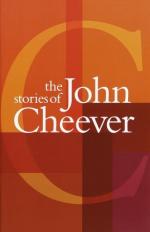|
This section contains 4,046 words (approx. 14 pages at 300 words per page) |

|
SOURCE: “‘The Country Husband’—A Model Cheever Achievement,” in Studies in Short Fiction, Vol. 27, No. 4, Fall, 1990, pp. 577-85.
In the following essay, Hipkiss examines the number of ways in which “The Country Husband” exposes upper middle-class angst and argues that the story is Cheever's most intense and best work of art.
“The Country Husband,” John Cheever's 1950s story of the well-to-do suburb of Shady Hill, is a minor masterpiece of contemporary fiction.1 Consider how much of the upper-middle-class suburban angst it includes: the tension between the individual's emotional needs for personal, individualized recognition and the responsibilities he must exercise toward others; the brittle order of man-made conventions, undermined by the instinctive, chaotic selfishness of animal biology; the would-be hero's visions of an Elysian future fractured by the triphammer echoes of history; and, through it all, the terrible failure of human communication, with the resultant condemnation to loneliness and...
|
This section contains 4,046 words (approx. 14 pages at 300 words per page) |

|


